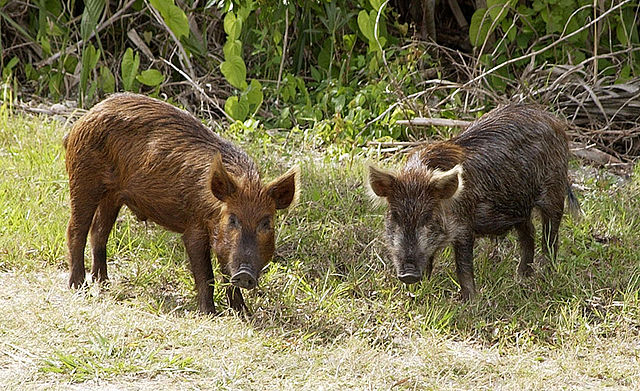Boared
There are four million of them roaming around the United States as we speak. Collectively, according to the New York Times, they cause roughly $800 million in property damage annually. But these animals are no ordinary pests — they’re not rats or termites or other such creatures which normally spring to mind as destructive nuisances.
They’re pigs — feral pigs. And they are, literally, out of control.

Feral pigs may look rather harmless — like furry cousins of the incredible, friendly pig from Charlotte’s Web. But that could not be further from the truth. Their voracious appetites combined with their willingness to eat almost anything mean that wherever they are, anything edible is certain to be consumed. They destroy the habitats of other wildlife, eating food other animals rely on. They ravage crops and shred other plants. According to the New York State Department of Environmental Conservation, they even “consume the nests and eggs of ground nesting birds and reptiles.” They know no boundaries, appear to have no fear, and reproduce rapidly. As the Times summarized, feral pigs are “[c]apable of breaking through fences. […] They run pickup trucks off the road. They prey on young livestock and woodland creatures. They carry disease. They gestate in four months and deliver litters of a half dozen.” The New York State DEC echoes that last sentence, noting that “[a] feral swine population can triple in one year.” They’re a menace.
Hunting them is no easy feat, either. They have very sharp tusks and can be deceptively quick, especially when injured, cornered, or otherwise threatened. In July of 2011, for example, a Texas man tried to trap five of the pigs in a pen on his ranch, but one of the pigs speared him in the calf. The rancher required more than 100 stitches. Another Texan, a hog hunter, told Environmental Graffiti that feral pigs are “the poor man’s grizzly [bear]. If you shoot at a hog, you’d better shoot straight, because if you don’t kill it, he might try and kill you.”
Given the feral pigs’ proclivity and the economic harm they cause, some jurisdictions take a no-holds-barred approach to their eradication. Missouri, for example, goes to the extreme: “Hunters afield for other game are encouraged to shoot feral hogs on sight when they are encountered. In Missouri, feral hogs may be killed in any number throughout the year. During most of the year no permit is required and any method is allowed[]. Resident landowners on land they own, and lessees on land on which they reside, may use any method to kill feral hogs at any time without a permit.”
Bonus fact: A typical feral pig weighs 100 to 200 pounds (50 to 90 kg) and, excluding its tail, can reach lengths of about six and a half feet (or about 200 cm). But in 2004, a feral pig was killed on a farm in Georgia which was about seven to eight feet long and weighed an estimated 800 pounds. That creature — a hybrid of a wild boar and a domesticated pig, seen here — earned the nickname Hogzilla. It was so large that news of its discovery and death was, originally, widely believed to be a hoax.
From the Archives: Bacon of the Sea: Pigs, swimming.
Related: “The Complete Book of Wild Boar Hunting: Tips and Tactics That Will Work Anywhere” by Todd Triplett. 4 stars on 14 reviews.

Leave a comment